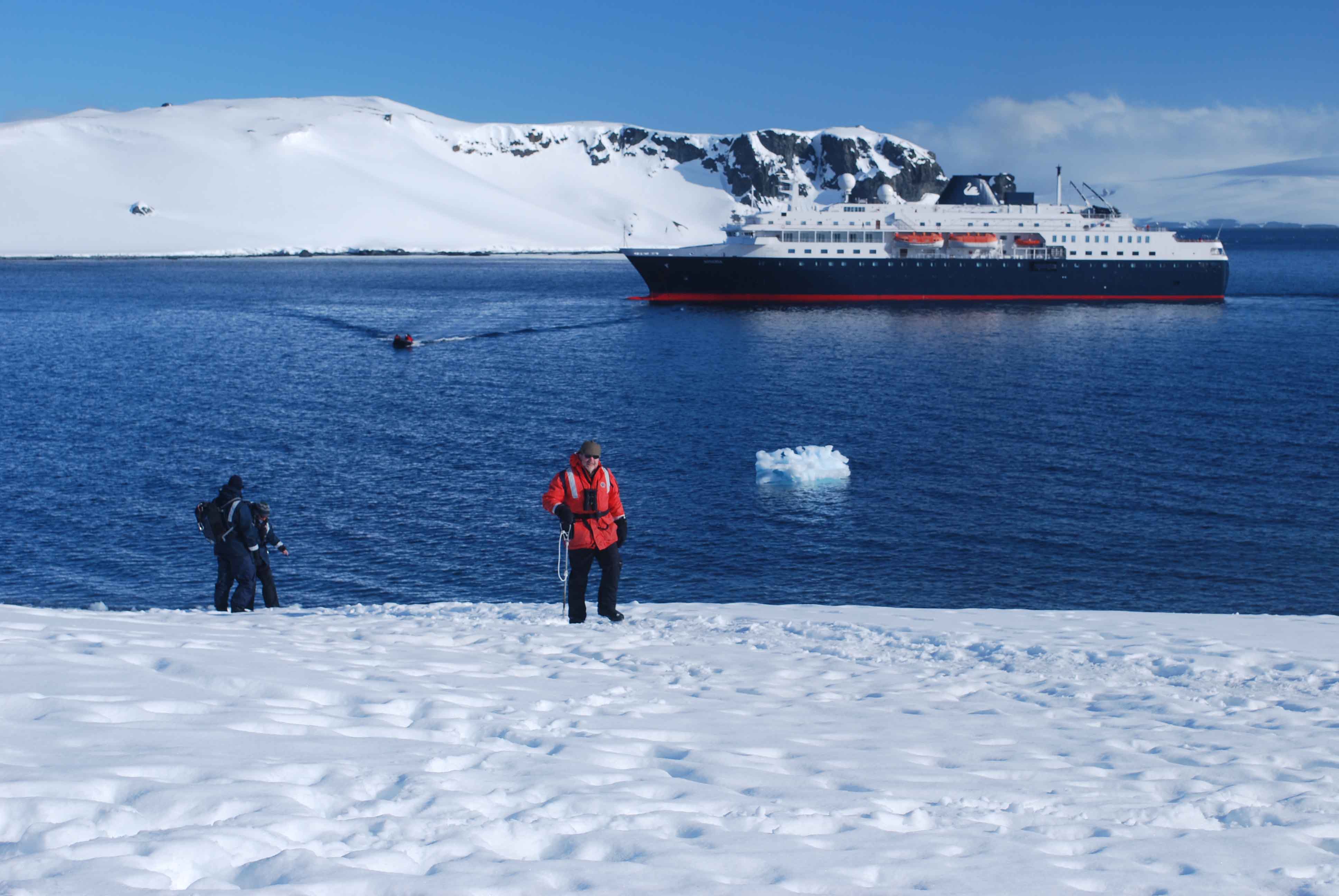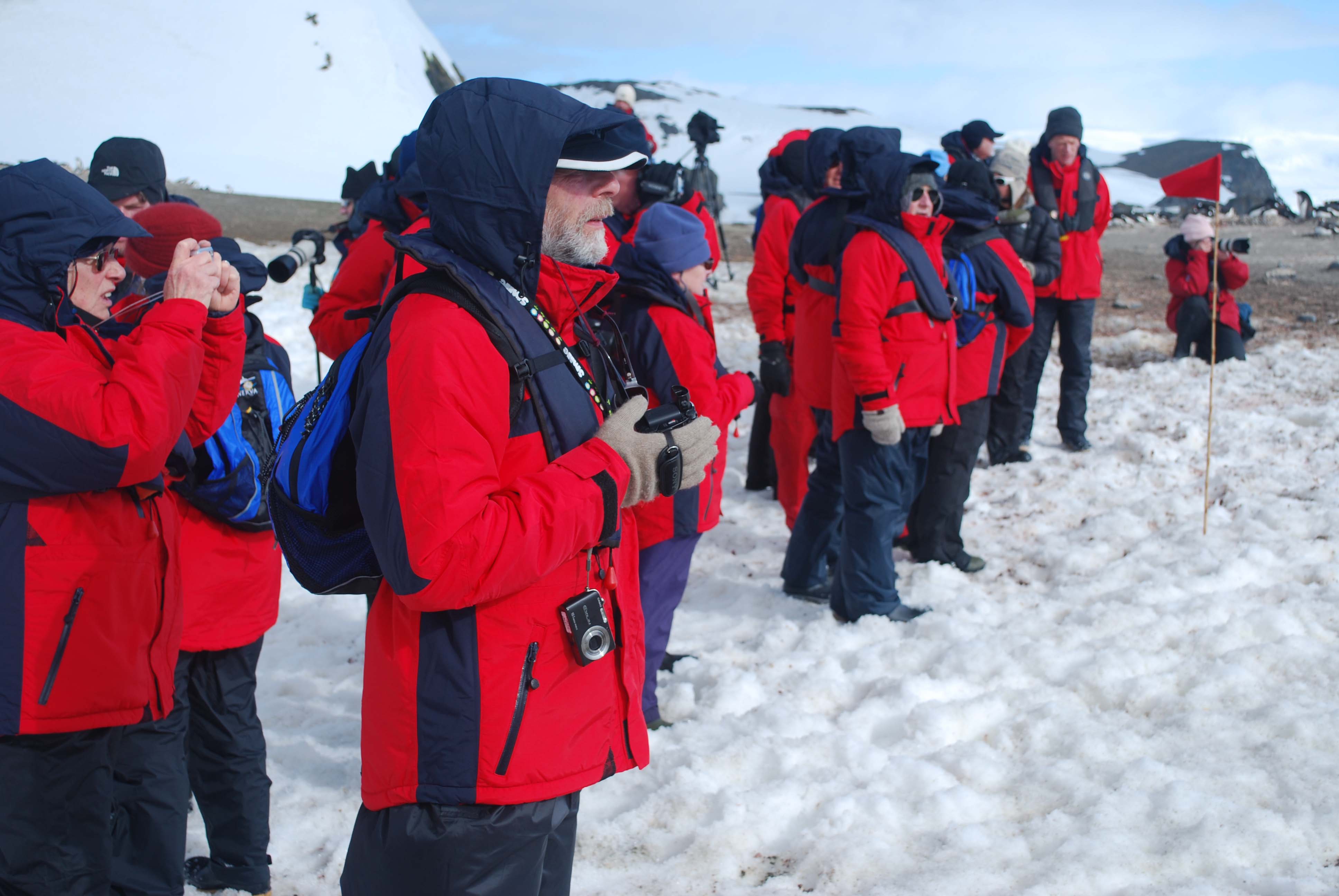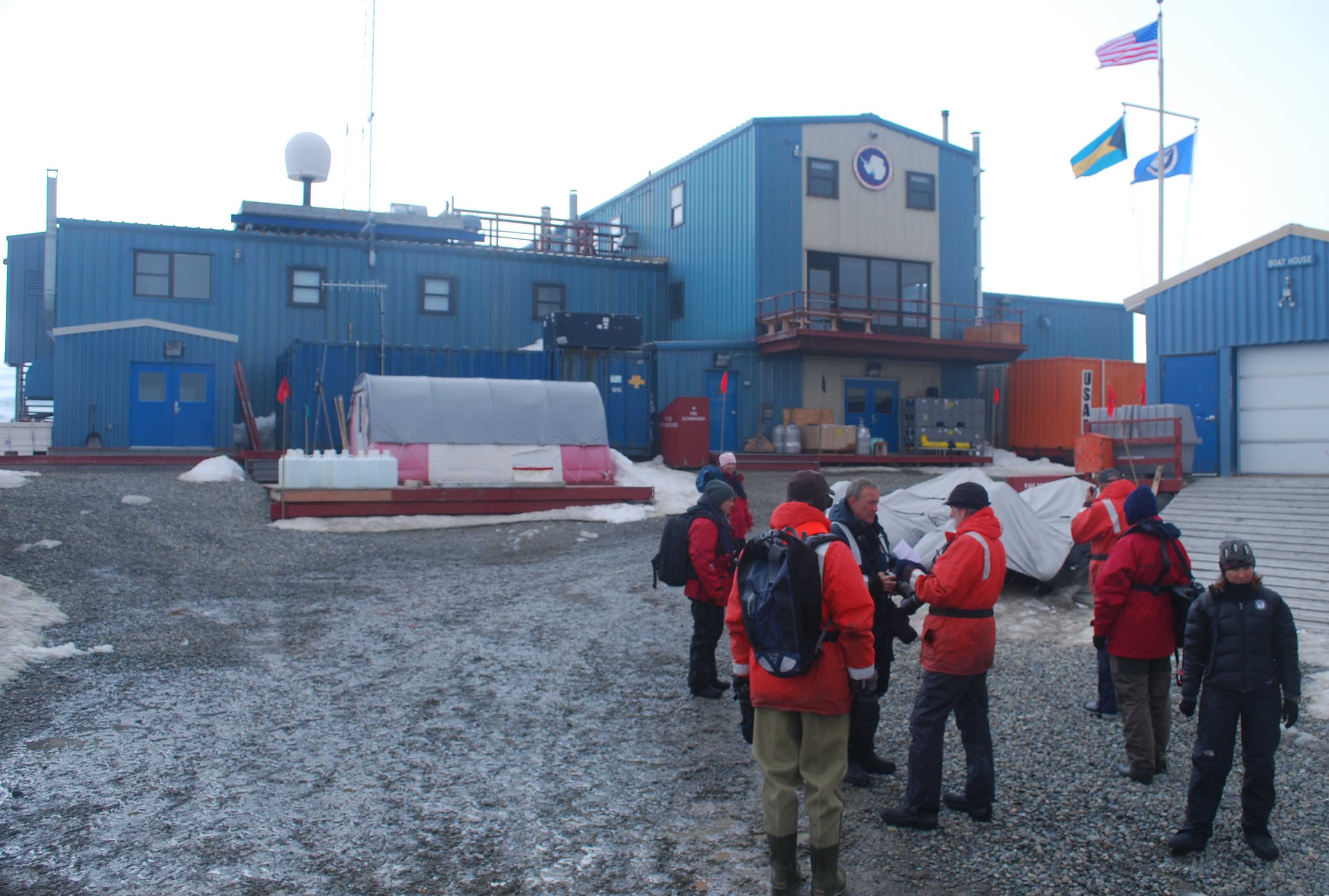
Because I have both conducted research at Palmer Station and been a lecturer aboard an Antarctic cruise ship that regularly visits the station, I have a unique perspective on the logistics, challenges, and inherent value of these station visits by citizens from around the world.
Each year, primarily during the summer months of December, January and February, about ten cruise ships are scheduled for visits to Palmer Station. Some of the tour ships that visit are very large, carrying up to several thousand tourists. These larger ships do not land their passengers at the station as it would simply not be logistically feasible. Rather, the large ships anchor in Arthur Harbor and are visited by the station leader and a contingent of well-trained outreach staff from the station. Once on board, the Palmer team heads to one of the huge auditoriums aboard ship to welcome the cruise guests and to make a presentation.
The ship-board presentations provide the visitors an overview of the history of the station and the role of the US National Science Foundation in providing funds that support the research activities and that fund a private contractor (Lockheed Martin is the current contractor) to handle all the logistics of staffing and running the station. The presentations also include a summary of the many cutting-edge research projects underway not only at Palmer Station, but also at the other two US Antarctic stations, McMurdo Station and the South Pole. My sense is that the guests aboard ship come away very impressed with the US Antarctic Program.

The Antarctic cruise ship upon which I serve once a year as a lecturer – Le Boreal – is small enough (about 190 guests) to facilitate a visit that includes not only a ship-board presentation but also transporting all the guests to shore to tour Palmer Station. This of course greatly enhances the whole experience. It is impressive to see how all those working at the station go out of their way to enthusiastically accommodate and educate the visitors. The guests arrive in zodiacs at their appointed times and once on shore are divided up into tour groups of about 15 individuals. Various staff on station volunteer to be trained as tour guides and they do a great job.
Importantly, the tours are designed so as to not interfere with ongoing scientific research. As such, the research laboratories and aquarium facility are not entered. But there is plenty to see otherwise. By the time the hour-long tour is over the guests have peeked into the aquarium, and if lucky, had a researcher show them some of the marine life, seen the power generators, learned about the reverse osmosis process used to turn seawater into freshwater, viewed the outside of the building housing the living quarters and recreation facility, stopped off in the station store to buy a t-shirt or fleece jacket, and enjoyed a brownie in the galley where there are research posters displayed and station staff and scientists mingling to answer questions.

Despite my concerns about the risks of large cruise ships that do not have reinforced hulls visiting icy Antarctic waters, overall I have been impressed with the inherent value of Antarctic tourism. The tour companies generally have a strong environmental ethic and take great care to operate their ships and educate their guests accordingly. But I believe the greatest value of Antarctic tourism is that tourists return as ambassadors of this amazing continent and help promote its value as a global commons for science. Palmer Station and its inhabitants are playing a key role in making this happen.